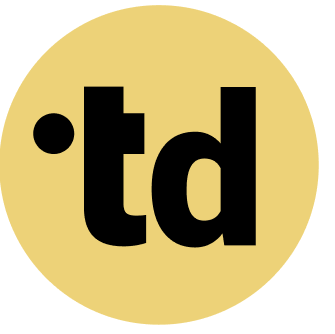Key Takeaways
Successful hybrid teams require treating AI as a teammate with a defined role, not just a tool, which can increase productivity by up to 30 percent.
Use a structured, four-step prototyping process (define mission, cast roles, map workflows, set guardrails) to test new team structures in a low-risk environment.
Effective scaling depends on a clear playbook and governance model derived from pilot testing to embed new hybrid structures into the organization.
Within the next year, 54 percent of executives expect to embed AI agents directly into teams, yet only 18 percent have mapped out the new roles and responsibilities this requires. This 36-point gap is where productivity falters and change fatigue sets in. For Team Architects, this is the moment to conquer chaos. This article provides a clear framework for how to prototype and test hybrid team structures, transforming your organization from a rigid hierarchy into a dynamic, high-performance system where humans and AI collaborate seamlessly. It's time to make your teams the heroes of this new era.
Define the New Assembly Line: Integrating Human and AI Roles
The modern team is no longer a static chart; it is a dynamic system of humans and AI agents. In Germany, 20 percent of companies already use AI, an 8-point increase in just one year. Large companies are leading this charge, with 48 percent integrating AI into their workflows. This requires a fundamental shift in organizational development, moving beyond who reports to whom and focusing on how work flows between human expertise and machine efficiency. The key is treating AI as a teammate with a defined role, not just a tool.
Successful hybrid teams map tasks to the right agent, human or machine, based on capability. High-performing human-AI teams report productivity gains of up to 30 percent when roles are clear and trust is high. This clarity is essential for creating hybrid structures that work. Designing these new workflows is the first step toward building a resilient, future-ready organization.
Sweet Teams Are Made of This: A Framework for Prototyping
Prototyping allows you to test new team designs in a low-risk environment before a full-scale rollout. It turns abstract ideas about organizational development into concrete models you can measure. For Team Architects, a structured approach is critical. You can try teamdecoder for free to model these roles visually. The goal is to build a blueprint that clarifies responsibilities from day one.
Here is a four-step process to guide your first prototype:
- Define the mission: Identify a specific, measurable business problem your hybrid team will solve, aiming for a a portion of improvement in a key metric.
- Cast the roles: Assign specific responsibilities using a framework like the five essential HAI-OS roles: AI Orchestrator, Agent Wrangler, Data Steward, Creative Lead, and Insights Partner.
- Map the workflows: Detail how tasks are handed off between human and AI agents, using a visual tool to spot bottlenecks before they happen.
- Set the guardrails: Establish clear escalation paths and decision-making authority, defining what decisions must remain human.
This structured prototyping helps you model human and AI roles effectively, setting the stage for meaningful testing.
Measure to Improve: Testing Your Hybrid Team Prototype
Once your prototype is live, rigorous testing determines its viability. Success isn't just about efficiency; it's about trust, satisfaction, and learning. Effective testing combines quantitative performance data with qualitative human feedback. A prototype that looks good on paper can fail if the human side of the collaboration is ignored. This phase provides the data needed to refine the structure before scaling.
Our Playful Tip: Run short, two-week sprints, treating each as an experiment with a clear hypothesis, like "This pod structure will reduce ticket resolution time by a significa"
Key metrics to track during your test phase include:
- Task completion rate and time
- Error reduction percentage
- AI contribution to key results
- Team member satisfaction scores (a a portion of increase is a strong signal)
- Decision-making speed
This data-driven approach to measuring team performance ensures your final design is built on evidence, not assumptions.
Make Bots and Humans Click: Mastering Change Management
Integrating AI teammates requires more than a technical manual; it demands a cultural shift. Change management is essential for overcoming resistance and building trust. Leaders must create a safe environment where team members can experiment and provide feedback on AI tools without fear of being replaced. This is a core part of effective transformation and new leadership.
Deep Dive: Go beyond formal training by creating a mentorship program where early adopters coach t This peer-to-peer learning can increase adoption by a significant portion.a significant number of. Focus on building new competencies like AI literacy and experiment design. These skills are crucial for anyone involved in human-AI teamwork, turning apprehension into confident collaboration.
From Pilot to Practice: Scaling Proven Hybrid Structures
A successful pilot is just the beginning. Scaling your tested prototype across the organization requires a clear strategy for operationalization. This involves standardizing the new roles and responsibilities and embedding them into your company's operating model. The goal is to make the hybrid structure the new business-as-usual, not a series of special projects. Governance is what makes innovation last.
Create a playbook from your pilot that outlines the team structure, workflows, and performance metrics. This playbook becomes the template for scaling, ensuring consistency while allowing for adaptation. As you expand, continuous monitoring of performance metrics is vital to ensure the model remains effective. This disciplined approach allows you to build a truly hybrid team that drives lasting value. See our pricing.
Try teamdecoder for free - shape your team and make change feel like play!
More Links
Technology Assessment at the German Bundestag offers insights into the societal impacts of hybrid work models and remote work.
Federal Institute for Occupational Safety and Health provides publications focusing on hybrid, location-flexible, and multi-local work arrangements.
Federal Statistical Office of Germany offers statistics and data on home office usage in Germany.
Federal Ministry of Labour and Social Affairs announces occupational safety recommendations for hybrid screen work.
Fraunhofer Institute for Industrial Engineering IAO provides research and insights into industrial engineering, including topics relevant to organizational development and human-AI interaction.
Microsoft explains how prototyping ideas can help teams learn innovation.
German Bundestag provides a short profile on data-related topics.
German Association of Ergonomics offers a factsheet about returning to the office.
FAQ
What is a hybrid team structure?
A hybrid team structure is an organizational model where humans and AI agents work collaboratively as teammates to achieve common goals. It involves defining specific roles, responsibilities, and workflows for both human and AI participants.
Why is prototyping important for designing team structures?
Prototyping allows you to model and test new team structures on a small scale before a full organizational rollout. This low-risk approach helps identify potential challenges, refine workflows, and gather data to ensure the new structure is effective and scalable.
What skills do managers need to lead hybrid teams?
Managers leading hybrid teams need strong skills in AI literacy, collaboration, and change management. They must understand AI's capabilities and limitations, foster effective teamwork between humans and machines, and guide their teams through organizational shifts.
How can I get started with teamdecoder?
You can start by signing up for a free trial on our website. Our platform provides the tools to visually map roles, design workflows, and prototype your new hybrid team structures, helping you bring clarity to your organization.





